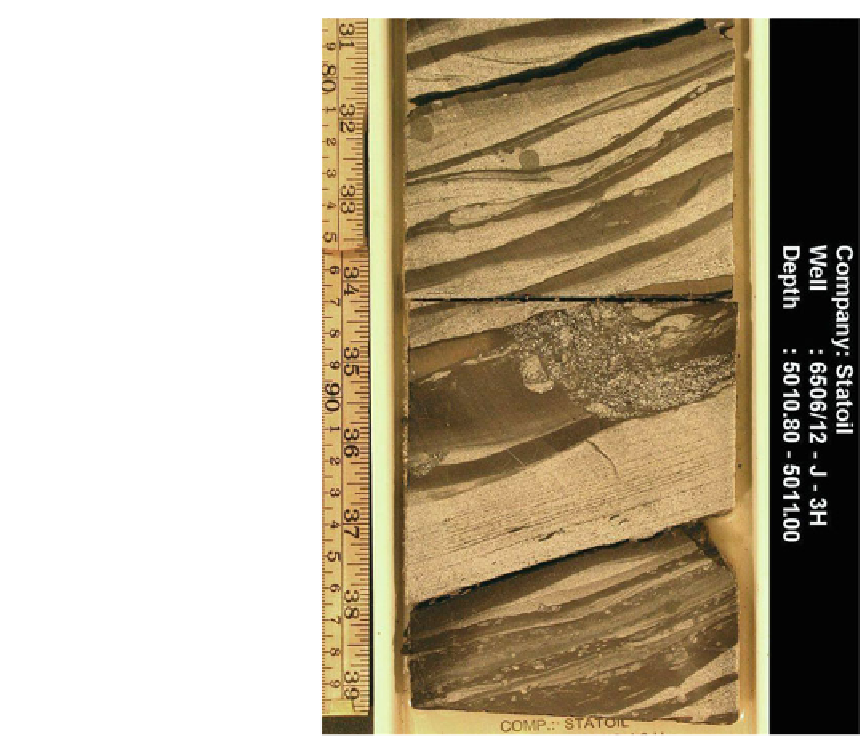Geoscience Reference
In-Depth Information
Fig. 6.16
Example tidal
heterolithic facies from
core - in this case an inter-
tidal wavy-bedded unit
showing flow ripples and
some bioturbation (Photo
A. Martinius/Statoil
#
Statoil ASA, reproduced
with permission)
reservoirs and these are now appreciated as being
a widespread and important class of petroleum
reservoir (e.g. offshore Norway, Alaska, Canada,
Venezuela and Russia).
They form in estuarine settings (Dalrymple
et al.
1992
) where tidal influences tend to dominate
the depositional system (Dalrymple and Rhodes
1995
). They have highly complex architectures
and stacking patterns, with bars, channels and
inter-tidal muddy deposits intermixed and difficult
to correlate laterally. The oscillatory nature of tide-
dominated currents results in mixed sandstone/
mudstone lithofacies, conveniently referred to as
'heterolithics'. Heterolithics are defined as sedi-
mentary packages with a strongly bimodal grain-
size distribution, typified by moderate to high fre-
quency alternation of sandstone layers with
siltstone/clay layers in which layer thicknesses
are commonly at
Heterolithic tidal sandstones represent partic-
ularly challenging reservoir systems because
they display:
generally marginal reservoir quality,
highly variable net-to-gross ratios,
highly anisotropic reservoir properties,
fine-scale heterogeneities which are not easily
handled
with
conventional
reservoir
modelling tools.
Recovery factors in heterolithics are typically
low, in the range 15-40 %.
6.3.2 Handling Heterolithics
Typically, the first inspection of heterolithic
sandstones facies (e.g. Fig.
6.16
) leads to the
response “so where is the reservoir?” Often, the
sandstone is so intermixed with the mudstone/
siltstone facies that identification of good and
the centimetre to decimetre
scale (Martinius et al.
2001
,
2005
).

